41 protein synthesis worksheet answers part a
Transcribe and Translate a Gene - University of Utah home; basic genetics; transcribe and translate a gene; transcribe and translate a gene. cga gua acg uug phenylalanine aspartic acid asparagine valine remember that a in dna pairs with u in rna. atatcaggaactctcctcct-cagcagtcaggtctatg-gaaactacaggataccttcct-caaccggggggtgggaatcc gtcacatatgagaaggtatttg ctcgataatcaatactccagg catctaacttttcccactgcct taagccggcttgccctttctg … Amoeba Sisters Handouts - Science with The Amoeba Sisters About and Suggested Use: Our annotated video script templates contain an informal version of our video script with slight improvements to define sentences and remove filler words to help with annotating.They have an annotation key asking students to (1) highlight parts of the transcript that they already knew (which can be built upon), (2) highlight key information that is new to …
Course Help Online - Have your academic paper written by a … Part-by-part payment; PowerPoint slides; Review your writer’s samples; Approx. 275 words / page; Font: 12 point Arial/Times New Roman; Double and single spacing; 10+ years in academic writing. 515 writers active. 97.12% orders delivered before the deadline. 8.5 / 10 ...

Protein synthesis worksheet answers part a
Nucleus - Definition and Examples - Biology Online Dictionary Nov 03, 2021 · In cell biology, the nucleus is the large, membrane-bounded organelle that contains the genetic material in the form of multiple linear DNA molecules organized into structures called chromosomes.In cell biology, the nucleus function is to act as the control center of the cell.This is because it contains the genetic material that codes for the vital functions of the cell. Join LiveJournal Password requirements: 6 to 30 characters long; ASCII characters only (characters found on a standard US keyboard); must contain at least 4 different symbols; 12.1 Basic Structure and Function of the Nervous System Nervous tissue, present in both the CNS and PNS, contains two basic types of cells: neurons and glial cells. A glial cell is one of a variety of cells that provide a framework of tissue that supports the neurons and their activities. The neuron is the more functionally important of the two, in terms of the communicative function of the nervous system.
Protein synthesis worksheet answers part a. DNA Transcription (Basic) - YouTube Transcription is the process by which the information in DNA is copied into messenger RNA (mRNA) for protein production. Originally created for DNA Interacti... 5 Major Stages of Protein Synthesis (explained with diagram) Some of the major stages of Protein Synthesis are: (a) Activation of amino acids, (b) Transfer of amino acid to tRNA, (c) Initiation of polypeptide chain, (d) Chain Termination, (e) Protein translocation . There are five major stages in protein synthesis each requiring a number of components in E. coli and other prokaryotes. Construction of the Cell Membrane - Wisc-Online OER channel proteins help molecules across the membrane via passive transport, a process called facilitated diffusion. These channel proteins are responsible for bringing in ions and other small molecules into the cell. ... The other type of transport protein is called a carrier protein. 6.4 Bone Formation and Development - OpenStax In the early stages of embryonic development, the embryo’s skeleton consists of fibrous membranes and hyaline cartilage. By the sixth or seventh week of embryonic life, the actual process of bone development, ossification (osteogenesis), begins. There are two osteogenic pathways—intramembranous ossification and endochondral ossification—but bone is the …
12.1 Basic Structure and Function of the Nervous System Nervous tissue, present in both the CNS and PNS, contains two basic types of cells: neurons and glial cells. A glial cell is one of a variety of cells that provide a framework of tissue that supports the neurons and their activities. The neuron is the more functionally important of the two, in terms of the communicative function of the nervous system. Join LiveJournal Password requirements: 6 to 30 characters long; ASCII characters only (characters found on a standard US keyboard); must contain at least 4 different symbols; Nucleus - Definition and Examples - Biology Online Dictionary Nov 03, 2021 · In cell biology, the nucleus is the large, membrane-bounded organelle that contains the genetic material in the form of multiple linear DNA molecules organized into structures called chromosomes.In cell biology, the nucleus function is to act as the control center of the cell.This is because it contains the genetic material that codes for the vital functions of the cell.
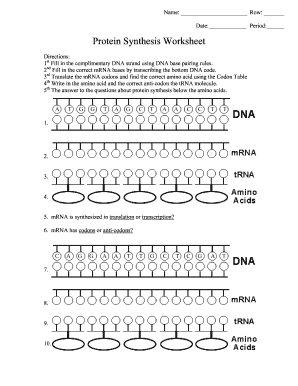




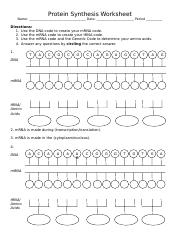

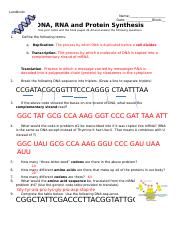


















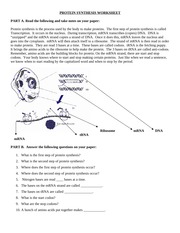

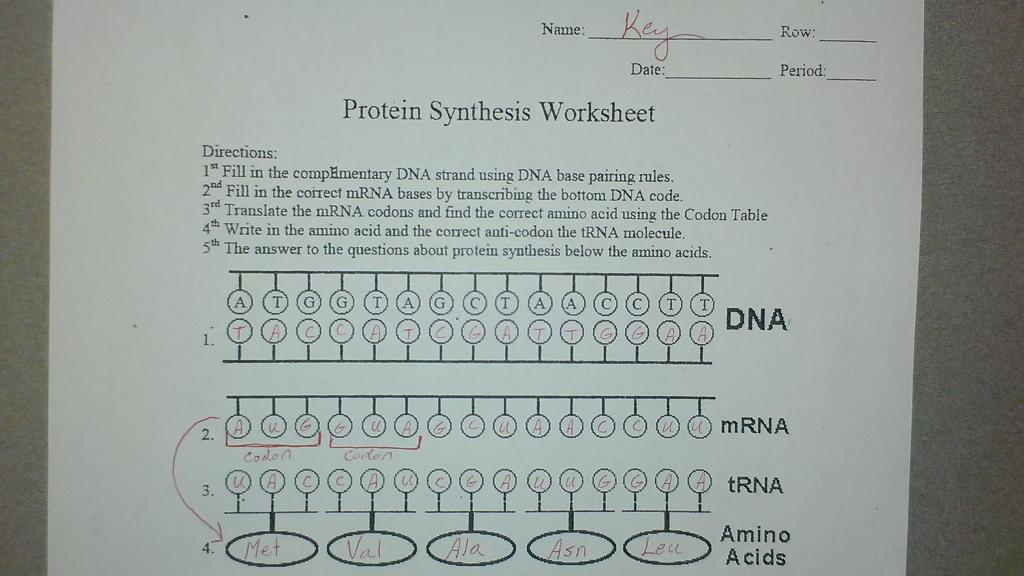








0 Response to "41 protein synthesis worksheet answers part a"
Post a Comment